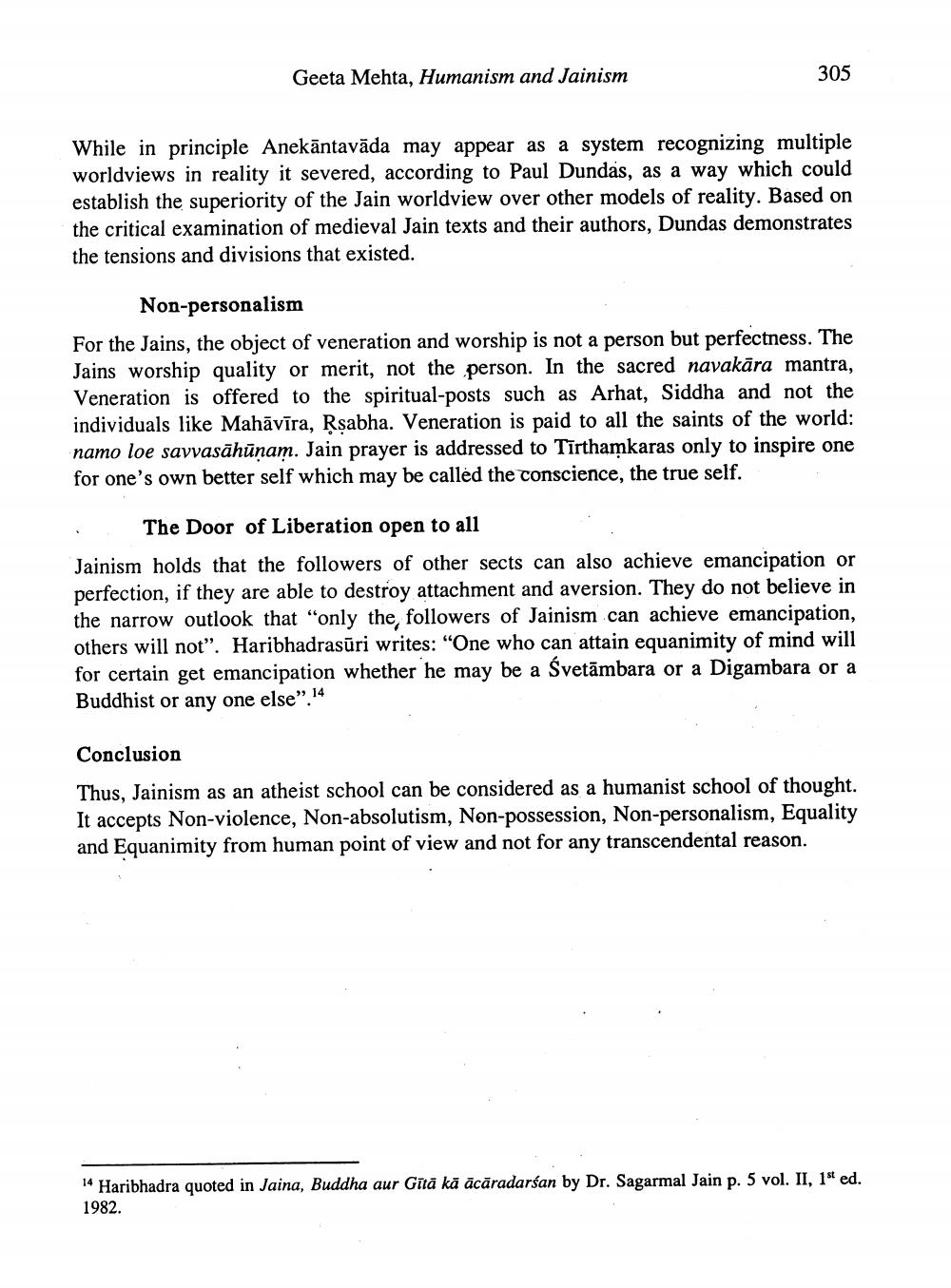________________
Geeta Mehta, Humanism and Jainism
305
While in principle Anekāntavāda may appear as a system recognizing multiple worldviews in reality it severed, according to Paul Dundas, as a way which could establish the superiority of the Jain worldview over other models of reality. Based on the critical examination of medieval Jain texts and their authors, Dundas demonstrates the tensions and divisions that existed.
Non-personalism For the Jains, the object of veneration and worship is not a person but perfectness. The Jains worship quality or merit, not the person. In the sacred navakāra mantra, Veneration is offered to the spiritual-posts such as Arhat, Siddha and not the individuals like Mahāvīra, Rsabha. Veneration is paid to all the saints of the world:
loe savvasāhūnam. Jain prayer is addressed to Tīrthamkaras only to inspire one for one's own better self which may be called the conscience, the true self.
i
The Door of Liberation open to all
Jainism holds that the followers of other sects can also achieve emancipation or perfection, if they are able to destroy attachment and aversion. They do not believe in the narrow outlook that "only the followers of Jainism can achieve emancipation, others will not". Haribhadrasūri writes: "One who can attain equanimity of mind will for certain get emancipation whether he may be a Svetāmbara or a Digambara or a Buddhist or any one else".14
Conclusion
Thus, Jainism as an atheist school can be considered as a humanist school of thought. It accepts Non-violence, Non-absolutism, Non-possession, Non-personalism, Equality and Equanimity from human point of view and not for any transcendental reason.
14 Haribhadra quoted in Jaina, Buddha aur Gītā kā ācāradarśan by Dr. Sagarmal Jain p. 5 vol. II, 1st ed. 1982.




